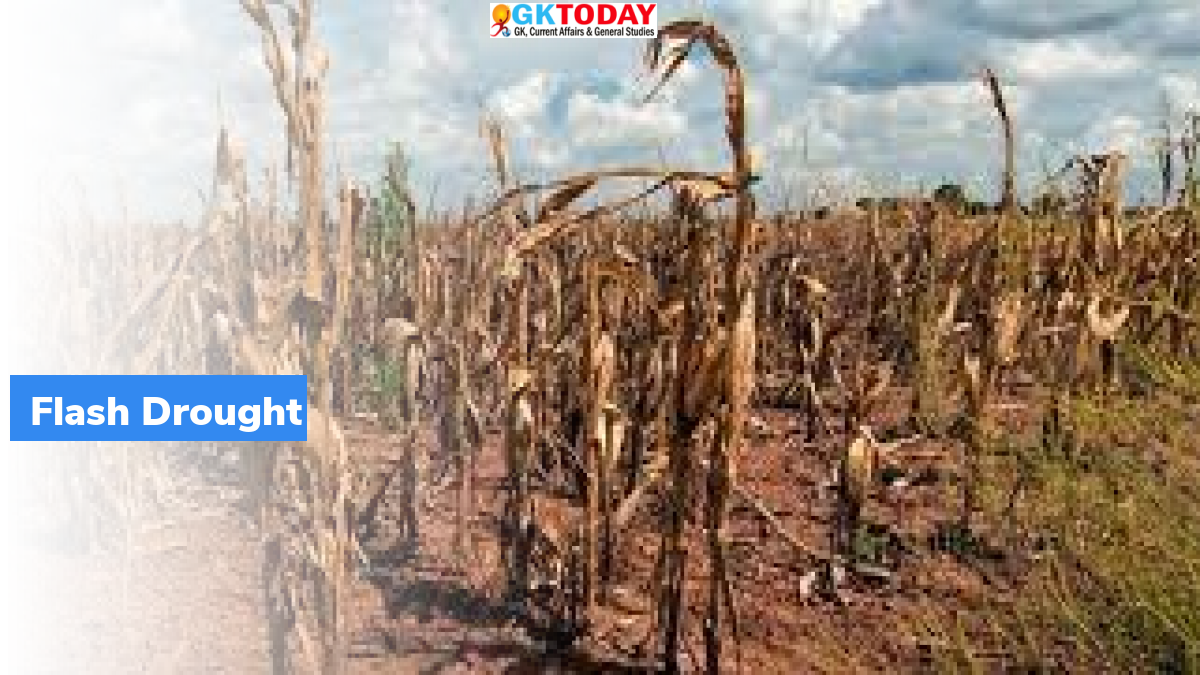Flash drought
Flash drought is the intensification of drought. It is set by lower – than – normal rates of precipitation. Such precipitation is accompanied by heavy winds, abnormally high temperatures and radiation.
What is a Flash drought?
Flash drought occurs due to reduced rainfall. This is followed by extremely high temperature. Such high temperatures increase evapotranspiration. Evapotranspiration is the process by which water is transferred from the land to the air through evaporation. During flash drought, the evapotranspiration occurs from plants, animals and soil as well.
What are the causes of flash drought?
The two main causes of flash drought are lack of precipitation and increase in evaporative demand. Evaporative demand is the measure of the level to which the environment evaporates water.
- The depletion in soil moisture is the major cause of flash drought.
- Flash droughts are not slow evolving droughts. They are caused due to decline in precipitation. They are accompanied by high temperatures and heavy winds. They increase evapotranspiration rates in the atmosphere.
- The climate patterns and geographical differences also impact the development of flash drought.
- Mostly flash droughts occur during warm seasons.
How are flash droughts predicted?
It is essential to predict flash drought in order to mitigate and prevent the damages. The best ways to predict flash droughts is to identify soil moisture and evapotranspiration. The flash droughts are preceded by sudden increase in evapotranspiration and heavy winds. However, flash droughts occur even without showing any preceding signs.
What are the impacts of flash droughts?
The flash droughts -mainly affect the agricultural sector. They affect the irrigation water demands and crop health. The flash droughts first deplete the soil moisture completely. It then moves deeper affecting the root zones of the crops.
How are flash droughts different from the normal droughts?
The normal droughts take months or sometimes years to develop to full intensity. On the other hand, the flash drought develops at faster rates and persist for few weeks to months. They are localised to specific areas. However, they are capable of becoming widespread.
Which regions of the world are affected by flash drought?
The highest frequency of flash drought occurrence has been recorded in the subtropics and tropics. This included India, Brazil, Great rift valley, central Mexico, northern Australia and Indo – Chinese peninsula. The local hotspots of flash drought occurrence were observed in southwestern Russia, Iberian Peninsula, central United States and north eastern China.
What are the impacts of flash droughts in India?
The flash drought events in India usually occur during monsoon season. It occurs mainly in central, north east and northern parts of the country. In India, around 10% to 15% of the rice and maize cultivation was affected by flash droughts between 1951 and 2018.


